Highlights of QB3-Berkeley research, awards, and events news from 2016.
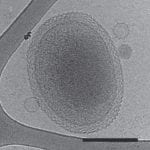 December 22, 2016 – Compact CRISPR Systems Found in Some of World’s Smallest Microbes
December 22, 2016 – Compact CRISPR Systems Found in Some of World’s Smallest Microbes
Jennifer Doudna and her colleagues have discovered simple CRISPR systems similar to CRISPR-Cas9 — a gene-editing tool that has revolutionized biology — in previously unexplored bacteria that have eluded efforts to grow them in the laboratory. If these systems can be re-engineered like CRISPR-Cas9, their small size could make them easier to insert into cells to edit DNA, expanding the gene-editing toolbox available to researchers and physicians. More >
 December 15, 2016 – From a Single Genetic Mutation, Secrets of ‘Boy in the Bubble’ Disease Revealed
December 15, 2016 – From a Single Genetic Mutation, Secrets of ‘Boy in the Bubble’ Disease Revealed
An international research study co-authored by Steven Brenner has identified the rare genetic mutation responsible for a unique case of “boy in the bubble” disease, known as severe combined immunodeficiency (SCID), a deadly immune system disorder. The researchers found that the cause was a mutated version of a gene called BCL11B, which also plays an unexpected role in the normal processes of immune system development. More >
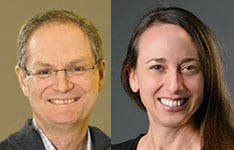 December 13, 2016 – Alivisatos and Herr Named Fellows of National Academy of Inventors
December 13, 2016 – Alivisatos and Herr Named Fellows of National Academy of Inventors
Chemist and nanotechnology pioneer Paul Alivisatos and bioengineer Amy Herr were among 175 distinguished academic inventors named fellows in an announcement today by the academy. Election as an NAI fellow is “a high professional distinction accorded to academic inventors who have demonstrated a prolific spirit of innovation in creating or facilitating outstanding inventions that have made a tangible impact on quality of life, economic development and the welfare of society.” More >
 November 22, 2016 – Young Blood Does Not Reverse Aging in Old Mice
November 22, 2016 – Young Blood Does Not Reverse Aging in Old Mice
A new study by Irina Conboy and her colleagues found that tissue health and repair dramatically decline in young mice when half of their blood is replaced with blood from old mice. The study argues against the rejuvenating properties of young blood and points to old blood, or molecules within, as driving the aging process. The research suggests that one day, instead of getting transfusions from young people, aged people will instead go to a medical facility to get their blood cleared of proteins that may build up and promote aging. More >
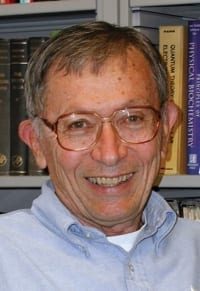 November 18, 2016 – Ignacio Tinoco Dies at Age 85
November 18, 2016 – Ignacio Tinoco Dies at Age 85
Ignacio Tinoco Jr. died on Nov. 15 at the age of 85. Tinoco, fondly known as “Nacho,” was emeritus professor of chemistry at the University of California, Berkeley. Tinoco is credited with creating the field of RNA biophysics. Over a career of more than 60 years, he was always a pioneer: from applications of quantum theory to why absorbance of nucleic acids increases upon helix melting, to the theory of circular dichroism, to using thermodynamics to predict RNA structures, to the use of NMR to study DNA and RNA, to applications of single-molecule methods to RNA. More >
 November 2, 2016 – Gatekeeping Proteins to Aberrant RNA: You Shall Not Pass
November 2, 2016 – Gatekeeping Proteins to Aberrant RNA: You Shall Not Pass
Mistakes happen. This is the case in the process of transporting genetic information in cells. How our cells keep errors in this process in check is the subject of a new paper by Mohammad Mofrad and his colleagues. Their findings shed light on a complex system of cell regulation that acts as a form of quality control for the transport of genetic information out of the nucleus. More >
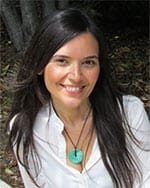 October 17, 2016 – Ünal Receives NIH New Innovator Award
October 17, 2016 – Ünal Receives NIH New Innovator Award
Elçin Ünal will receive a NIH New Innovator award, which is designed to stimulate highly innovative research and support promising new investigators. Her lab studies the principles that control the nuclear and cytoplasmic integrity of gametes towards understanding how gamete formation counteracts age-induced cellular damage and how the meiotic cells partition their chromosomes. More >
 October 12, 2016 – Hallatschek and Xu Win CAREER Awards
October 12, 2016 – Hallatschek and Xu Win CAREER Awards
The National Science Foundation selected Oskar Hallatschek and Ke Xu for Faculty Early Career Development (CAREER) grants. These are given to scientists and engineers in the early stages of their independent research careers who exemplify the role of teacher-scholars through outstanding research, excellent teaching, and the integration of education and research. More >
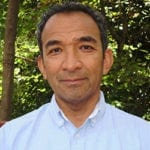 October 6, 2016 – Investigating the Link Between UTI and Food Poisoning
October 6, 2016 – Investigating the Link Between UTI and Food Poisoning
A new research collaboration between UC Berkeley and the Centers for Disease Control and Prevention and led by Lee Riley will study whether food is a significant source of the antibiotic-resistant bacteria that cause urinary tract infections, the most common bacterial infections in the developed world, which disproportionately affect women. More >
 October 6, 2016 – Research Gives Hope to Those with Head and Facial Deformities
October 6, 2016 – Research Gives Hope to Those with Head and Facial Deformities
Calcium, the main constituent of bone, turns out to play a major role in regulating the cells that orchestrate bone growth, a finding by Michael Rape and his colleagues that could affect treatment for conditions caused by too much collagen deposition, such as fibrosis and excessive scarring, as well as diseases of too little bone growth, such as Treacher Collins Syndrome (TCS). More >
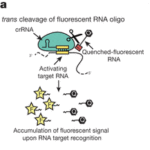 September 26, 2016 – CRISPR Toolbox Expanded by Protein that Cuts RNA in Two Distinct Ways
September 26, 2016 – CRISPR Toolbox Expanded by Protein that Cuts RNA in Two Distinct Ways
Biochemist Jennifer Doudna, molecular biologist Robert Tijan, and a team of researchers have expanded the role of the newly discovered CRISPR protein C2c2 that targets RNA instead of DNA. This discovery may lead to an auto-amplifying detector that may be useful as a low-cost diagnostic. More >
 September 8, 2016 – Can Some Types of Fat Protect Us from Brain Disease?
September 8, 2016 – Can Some Types of Fat Protect Us from Brain Disease?
While investigating mitochondria in nematode worms genetically engineered to have Huntington’s disease, Andrew Dillin and his colleagues made an intriguing finding which suggests that having a little bit of extra fat may help reduce the risk of developing some neurodegenerative diseases, such as Huntington’s, Parkinson’s and Alzheimer’s diseases. More >
 August 10, 2016 – Biochemist Howard Schachman, an Advocate for Research Ethics, Dies at 97
August 10, 2016 – Biochemist Howard Schachman, an Advocate for Research Ethics, Dies at 97
Howard Schachman, an influential biochemist who became a political and scientific activist, challenging not only California’s loyalty oath and its mandatory retirement rules but also the way fraud is dealt with in science, died Friday, Aug. 5, from complications of pneumonia. Schachman’s most important research contributions were in understanding how enzymes rearrange their structure when they bind to other molecules, often setting off a cascade of other enzymatic reactions in the process. More >
 July 27, 2016 – When Targeting Cancer Genes, Zero in on the 1 Percent
July 27, 2016 – When Targeting Cancer Genes, Zero in on the 1 Percent
Most cancer drugs are designed to halt cell growth, the hallmark of cancer, and one popular target is the pathway that controls the production of a cell’s thousands of proteins. Jamie Ctae and his colleagues have now found a promising new drug target within that pathway that is appealing, in part, because it appears to control production of only a few percent of the body’s many proteins, those critical to regulating the growth and proliferation of cells. More >
 June 30, 2016 – Fetal Surgery Stands to Advance from New Glues Inspired by Mussels
June 30, 2016 – Fetal Surgery Stands to Advance from New Glues Inspired by Mussels
Equipped with new funding from the National Institutes of Health and a partnership with a physician known as the “father of fetal surgery,” Phillip Messersmith is making better glues for medical procedures inside the body, applying what he and others before him have learned about underwater superglue-making techniques that have been developed and elaborated upon through eons of evolution by mussels, a brainless bivalve. More >
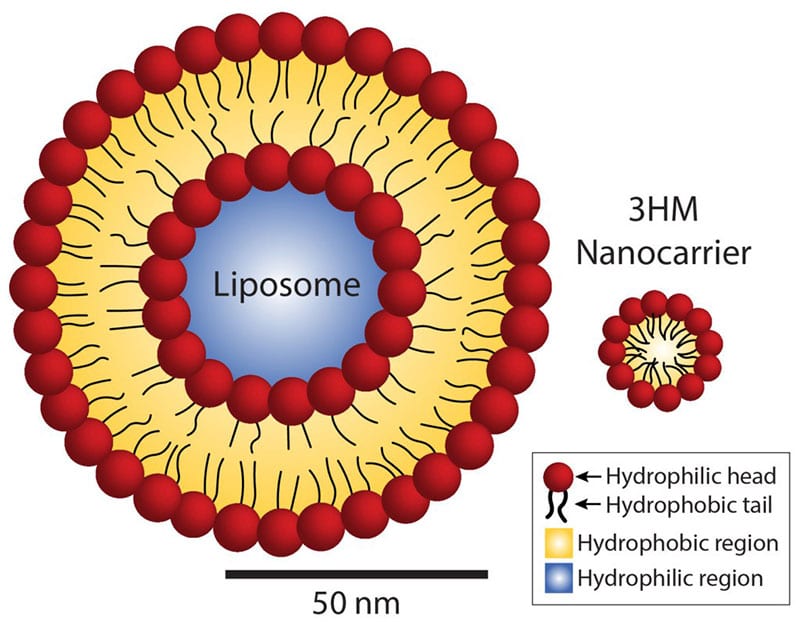 Spring 2016 – Finding Chemo
Spring 2016 – Finding Chemo
To help cancer drugs access the tumor, Ting Xu and her collaborators are making tiny particles called nanocarriers that protect the drugs during their journey to the tumor. They recently demonstrated that their nanocarrier, called a 3-helix micelle (3HM), is twice as effective at reaching glioblastoma cells as a liposome, a nanocarrier that is currently the gold standard in drug-delivering nanotechnology. More >
 June 15, 2016 – On the Path Toward Bionic Enzymes
June 15, 2016 – On the Path Toward Bionic Enzymes
There may soon be a new way to make molecules to form the basis of pharmaceuticals, fuels, materials, agrochemicals and an array of other products in our modern life. A team of researchers that includes Douglas Clark has successfully married chemistry and biology to create reactions never before possible. More >
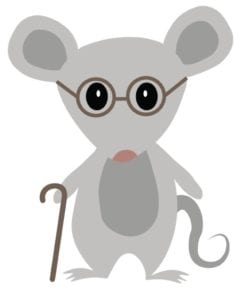 Spring 2016 – The Bloody Battle Against Aging
Spring 2016 – The Bloody Battle Against Aging
Blood has long been a key ingredient in fantastic tales of eternal youth. Medieval doctors practiced bloodletting to void the body of “evil” impurities, and immortal, blood-sucking vampires have dominated legends for centuries. While these stories now provide plot lines for Hollywood, they also inspire cutting-edge science. By examining the chemical makeup of young blood, Irina Conboy, David Schaffer, and their colleagues have discovered a drug that could turn back the age clock. More >
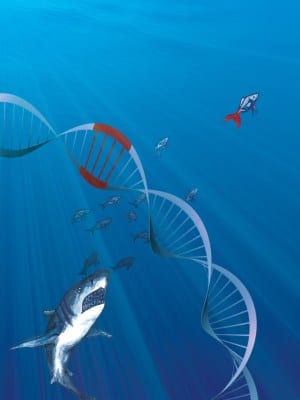 Spring 2016 – From DNA to Diversity
Spring 2016 – From DNA to Diversity
In search of the molecular basis of evolution, QB3 scientists and their colleagues are investigating the largest genetic leaps, from the origins of multicellularity to the rapid and flexible adaptation of animal body plans. Others are digging even further into the history of life, to the humble bacteria that made some of the earliest contributions to molecular evolution—billions of years in the past. More >
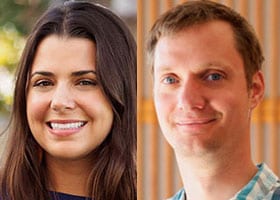 June 9, 2016 – Pew Awards to Brar and Hockemeyer
June 9, 2016 – Pew Awards to Brar and Hockemeyer
Gloria Brar and Dirk Hockemeyer have received research awards from the Pew Charitable Trusts to pursue research in cell biology and cancer. Each scholar will receive four years of flexible funding to pursue foundational, innovative research. More >
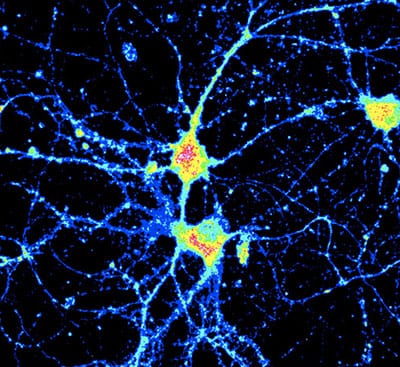 May 17, 2016 – Copper: A New Player in Health and Disease
May 17, 2016 – Copper: A New Player in Health and Disease
By tracking the movement of copper atoms in and out of nerve cells, Chris Chang has shown that changes in concentration of copper can switch on or off signaling between neurons. As a result, Chang hypothesizes that blocking or accelerating copper accumulation may provide a new treatment for a range of diseases or disorders, from neurodegenerative disease to cancer and obesity. More >
 May 17, 2016 – What You See Is What You’ve Got
May 17, 2016 – What You See Is What You’ve Got
Bioengineering & EECS professor Steven Conolly and his lab are a world leader in development of a new nanoparticle-based medical imaging procedure, Magnetic Particle Imaging (MPI). Over ten years into development at Berkeley, the team has recently produced groundbreaking new images and spun the technology out into a startup company, Magnetic Insight. More >
 May 13, 2016 – Beware of Microbial Traffic Jams
May 13, 2016 – Beware of Microbial Traffic Jams
When tiny microbes jam up like fans exiting a baseball stadium, they can do some real damage. Oskar Hallatschek and his research colleagues found this out the hard way when the baker’s yeast cells (Saccharomyces cerevisiae) they were studying multiplied so prolifically that they burst the tiny chamber in which they were being raised. More >
 May 11, 2016 – Scientists Decipher Opening Dance Steps of DNA and Its Partner
May 11, 2016 – Scientists Decipher Opening Dance Steps of DNA and Its Partner
Researchers in the Nogales lab in collaboration with Northwestern University and Georgia Tech have produced atomic resolution structural snapshot of the transcription initiation process using cryo-EM that illustrate how the pre-initiation complex opens the transcription bubble and how it changes as mRNA synthesis proceeds. More >
 May 5, 2016 – Breastfeeding Is Good for Yet Another Reason, Researchers Discover
May 5, 2016 – Breastfeeding Is Good for Yet Another Reason, Researchers Discover
A mother’s breast milk supports immune responses in her newborn that help the infant’s gut become a healthy home to a mix of bacterial species, thanks in part to newly identified antibodies from the mother, according to a study by Greg Barton, Meghan Koch, and their colleagues. More >
 May 3, 2016 – Genetic Switch Could Be Key to Increased Health and Lifespan
May 3, 2016 – Genetic Switch Could Be Key to Increased Health and Lifespan
Andrew Dillin and his co-researchers have discovered that genetic switches that increase lifespan and boost fitness in worms are also linked to increased lifespan in mammals, offering hope that drugs to flip these switches could improve human metabolic function and increase longevity. More >
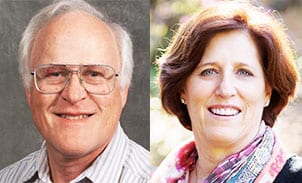 May 3, 2016 – Glaeser and Marqusee Elected to National Academy of Sciences
May 3, 2016 – Glaeser and Marqusee Elected to National Academy of Sciences
Robert Glaeser and Susan Marqusee have been elected the National Academy of Sciences. The academy is the most prestigious scientific society in the U.S., established under a congressional charter signed by Abraham Lincoln in 1863. More >
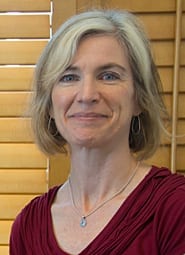 April 29, 2016 – Doudna Named Foreign Member of UK’s Royal Society
April 29, 2016 – Doudna Named Foreign Member of UK’s Royal Society
Biochemist Jennifer Doudna has been named a foreign member of the prestigious Royal Society, a rare honor for a UC Berkeley faculty member. The society is a fellowship of many of the world’s most eminent scientists and is the oldest scientific academy in continuous existence. More >
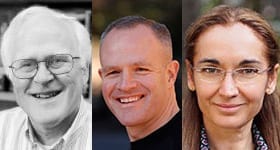 April 20, 2016 – Glaeser, Keasling, and Nogales Elected to the American Academy of Arts and Sciences
April 20, 2016 – Glaeser, Keasling, and Nogales Elected to the American Academy of Arts and Sciences
The American Academy of Arts and Sciences announced the election of Robert Glaeser, Jay Keasling, and Eva Nogales as new members. Founded in 1780, the academy is one of the country’s oldest learned societies and independent policy research centers. More >
 April 15, 2016 – Garcia Selected as Searle Scholar
April 15, 2016 – Garcia Selected as Searle Scholar
Hernan Garcia, an assistant professor of molecular and cell biology and of physics, has been appointed as a Searle Scholar. The Searle program makes grants to universities and research centers to support the independent research of exceptional young faculty in the biomedical sciences and chemistry. Garcia will receive $300,000 in research support for the next three years for his project titled “Lighting Up the Synthetic Fly.” More >
 April 4, 2016 – NanoFab Multibeam Ion Microscope Ready for Business
April 4, 2016 – NanoFab Multibeam Ion Microscope Ready for Business
The NSF-funded multibeam Zeiss Orion NanoFab ion microscope (He+, Ne+, Ga+) in QB3-Berkeley’s Biomolecular Nanotechnology Center is now ready for full-community access. Over the last year the tool has been tested rigorously by a select group of users for a range of imaging, nanofabrication, and implantation-type experiments in materials and life science with many exciting results. More >
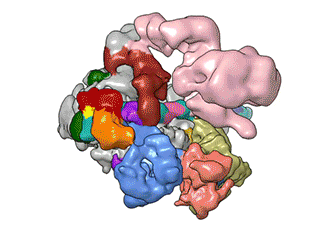 March 17, 2016 – Unlocking the Secrets of Gene Expression
March 17, 2016 – Unlocking the Secrets of Gene Expression
Using cryo-electron microscopy (cryo-EM), Eva Nogales and her research team have made a significant breakthrough in our understanding of how our molecular machinery finds the right DNA to copy, showing with unprecedented detail the role of a powerhouse transcription factor known as TFIID. More >
 March 17, 2016 – How Bacteria Get Their Magnetic Compass
March 17, 2016 – How Bacteria Get Their Magnetic Compass
Many bacteria build miniature magnets and use them to navigate their environment, and Arash Komeili has found a neat trick they use to do it. As reported in PLOS Biology, he has discovered that most magnetotactic bacteria repurpose a common enzyme and use it as a scaffold to assemble iron atoms into tiny magnets. More >
 March 16, 2016 – ‘Disruptive Device’ Brings Xenon-NMR to Fragile Materials
March 16, 2016 – ‘Disruptive Device’ Brings Xenon-NMR to Fragile Materials
A new device developed in Alex Pines’ lab will enable nuclear magnetic resonance spectroscopy, coupled with a powerful molecular sensor, to analyze molecular interactions in viscous solutions and fragile materials such as liquid crystals. More >
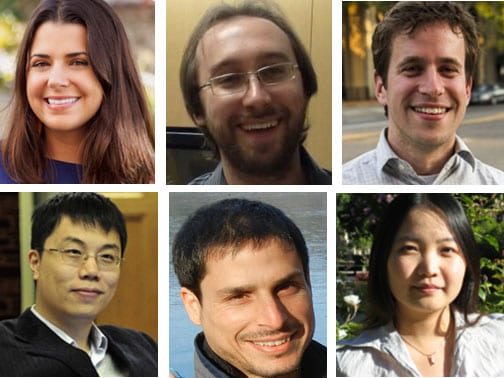 February 23, 2016 – Sloan Foundation Honors Young Faculty Members
February 23, 2016 – Sloan Foundation Honors Young Faculty Members
Gloria Brar, Hernan Garcia, Evan Miller, Ke Xu, Nir Yosef, and Wenjun Zhang have been awarded Alfred P. Sloane Foundation Research Fellowships. The fellowships honor early-career scientists and scholars whose achievements and potential identify them as rising stars and members of the next generation of scientific leaders. More >
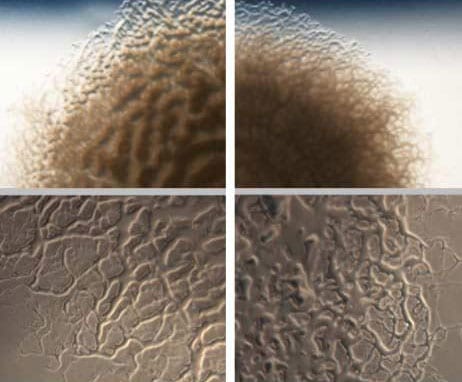 February 9, 2016 – Hammond’s High Risk/High Reward Research Pays Off
February 9, 2016 – Hammond’s High Risk/High Reward Research Pays Off
How do bacteria decide when to stick around, and what can we do about it? Ming Hammond and her co-workers are working to answer these questions and just published an article exploring this topic in the Proceedings of the National Academy of Sciences. Their results may eventually lead to new approaches for controlling bacteria, with wide-ranging implications from disease prevention to environmental cleanup. More >
 January 21, 2016 – Paul Alivisatos Appointed Vice Chancellor, Research
January 21, 2016 – Paul Alivisatos Appointed Vice Chancellor, Research
Roberto Zoncu has received a Damon Runyon-Rachleff Innovator Award for his proposed work to synthesize novel molecules that can specifically disable the lysosomal-mTORC1 signaling pathway as a new means of starving cancer cells and thus blocking tumor growth. More >
 January 19, 2016 – Doudna Joins Biden in Davos Rollout of ‘Cancer Moonshot’
January 19, 2016 – Doudna Joins Biden in Davos Rollout of ‘Cancer Moonshot’
Jennifer Doudna joined Joseph Biden this morning at the World Economic Forum in Davos, Switzerland, as the vice president promoted a major new U.S. initiative to speed the discovery of cures for cancer, what President Obama has dubbed a “cancer moonshot.” More >
 January 18, 2016 – Seeing the Big Picture in Photosynthetic Light Harvesting
January 18, 2016 – Seeing the Big Picture in Photosynthetic Light Harvesting
Researchers led by Graham Fleming have created the first computational model that simulates the light-harvesting activity of thousands of antenna proteins that would interact in the chloroplast of an actual leaf. The results point the way to improving the yields of food and fuel crops, and developing artificial photosynthesis technologies for next generation solar energy systems. More >
Faculty awards news archive – 2016
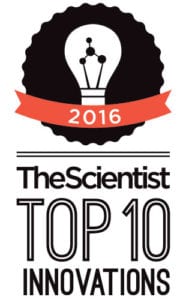 December 1, 2016 – Herr Lab Spin-off Innovation Recognized
December 1, 2016 – Herr Lab Spin-off Innovation Recognized
The Scientist has named an instrument developed in Amy Herr’s lab the #1 most innovative life science product of 2016. Milo, marketed by ProteinSiimple, is a benchtop instrument that allows researchers to search for specific proteins in about 1,000 single cells at once. More >
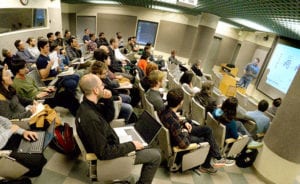 October 25, 2016 – Support for Bioscience Meetings Available
October 25, 2016 – Support for Bioscience Meetings Available
MCB and QB3 are pleased to announce financial and administrative support to catalyze new, one-day symposia organized by graduate students and/or postdoctoral fellows. The program is designed to promote interactions and communication across disciplinary boundaries. Apply by November 15 >
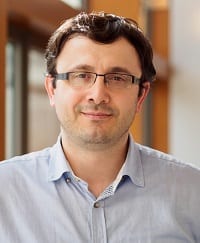 October 16, 2016 – Yildiz Receives Biophysical Society Award
October 16, 2016 – Yildiz Receives Biophysical Society Award
Ahmet Yildiz will receive the Michael and Kate Bárány Award from the Biophysical Society for his pioneering work in high-precision single molecule fluorescence and force microscopy to investigate the molecular mechanisms of cell motility. The award is intended to recognize an outstanding contribution to biophysics by a person who has not achieved the rank of full professor at the time of nomination. More >
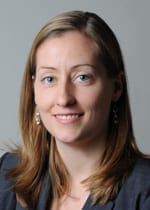 October 14, 2016 – Waller Garners Grant from Federal BRAIN Initiative
October 14, 2016 – Waller Garners Grant from Federal BRAIN Initiative
Laura Waller received $225,000 from the National Eye Institute and the National Institute of Neurological Disorders and Stroke to develop compressive light field microscopy to optogenetically track neural activity. More >
 September 19, 2016 – Genome Engineering Pioneers Headline Berkeley Symposium
September 19, 2016 – Genome Engineering Pioneers Headline Berkeley Symposium
Leading scientists in genome engineering presented their research to a sold-out crowd on August 22, at a Berkeley event hosted by QB3 and IGI and sponsored by Agilent and Thermo Fisher Scientific. Watch a slide show.
More >
 August 23, 2016 – Alumna Gardner Is a Top Innovator Under 35
August 23, 2016 – Alumna Gardner Is a Top Innovator Under 35
Kelly Gardner is among the seven current and former UC Berkeley researchers named as the year’s top innovators under 35, a list compiled each year by MIT Technology Review. Gardner received her Ph.D. in 2013, was a postdoc in Amy Herr’s lab, and worked in Zephyrus Biosciences, a start-up in the QB3 Garage@Berkeley that also received support from QB3’s Startup in a Box program, Skydeck, and the Bakar Fellows program. More >
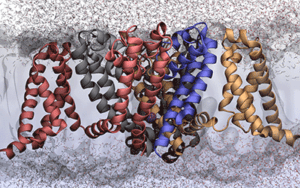 July 29, 2016 – Head-Gordon Leads Berkeley Partnership to Improve Scientific Software
July 29, 2016 – Head-Gordon Leads Berkeley Partnership to Improve Scientific Software
The National Science Foundation (NSF) has announced a major award to establish the the Molecular Sciences Software Institute. Teresa Head-Gordon, Chancellor’s Professor of Bioengineering, Chemistry and Chemical & Biomolecular Engineering, is the lead scientist at UC Berkeley. More >
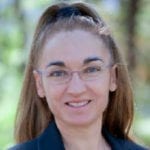 July 28, 2016 – Biophysicist Eva Nogales Named 2016 Porter Lecturer
July 28, 2016 – Biophysicist Eva Nogales Named 2016 Porter Lecturer
Eva Nogales will give the 2016 Keith Porter Lecture at ASCB 2016 in San Francisco. Nogales has revolutionized the structural study of proteins frozen at cryogenic temperatures with cryo-electron microscopy and her lab has solved the structure of a human transcription promoter in near-atomic resolution. More >
 July, 2016 – Landry and Xu Receive Beckman Awards
July, 2016 – Landry and Xu Receive Beckman Awards
Markita Landry and Ke Xu are recipients of 2016 Beckman Young Investigators Awards. Recipients, whose proposed projects are viewed as innovative, high-risk, and showing promise for significant advances in chemistry and the life sciences, receive up to $750,000 over four years. More >
 June 21, 2016 – Rape Wins Blavatnik Award
June 21, 2016 – Rape Wins Blavatnik Award
Michael Rape is a winner of the 2016 Blavatnik National Award for Young Scientists for his fundamental discoveries related to ubiquitylation – a process of cellular signaling dependent on the protein ubiquitin – which has emerged as a complex cellular language essential for information transfer and communication in nearly all organisms. More >
 June 19, 2016 – Doudna Wins Tang Prize in Biopharmaceutical Science
June 19, 2016 – Doudna Wins Tang Prize in Biopharmaceutical Science
Jennifer Doudna, Emmanuelle Charpentier, and Feng Zhang were named the winners of the second Tang Prize in biopharmaceutical science “for the development of CRISPR/Cas 9 as a breakthrough genome editing platform that promises to revolutionize biomedical research and disease treatment.” More >
 May 23, 2016 – Marletta Elected to American Philosophical Society
May 23, 2016 – Marletta Elected to American Philosophical Society
Michael Marletta was elected as one of twenty-eight new Resident members of the American Philosophical Society. Working on the interface of chemistry and biology, Michael A. Marletta has made groundbreaking contributions to our understanding of an essential cellular control system, nitric oxide signaling. More >
 May 19, 2016 – White House Honors Alivisatos
May 19, 2016 – White House Honors Alivisatos
Paul Alivisatos was awarded the National Medal of Science at the White House on May 19. Alivisatos is a recognized authority on the fabrication of nanocrystals and their use in solar energy applications. More >
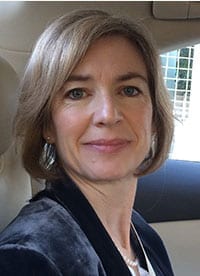 May 11, 2016 – Doudna Receives Heineken Prize
May 11, 2016 – Doudna Receives Heineken Prize
The Royal Netherlands Academy of Arts and Sciences has awarded the 2016 Dr H.P. Heineken Prize for Biochemistry and Biophysics to Jennifer Doudna for her pioneering research into the structure and functioning of RNA molecules and RNA protein complexes. More >
 May 10, 2016 – Fleming Wins RSC Faraday Prize
May 10, 2016 – Fleming Wins RSC Faraday Prize
Chemistry professor Graham Fleming has won the Royal Chemistry Society’s Faraday Lectureship Prize 2016. The prize was awarded for experimental and theoretical achievements that have redefined the study and understanding of fundamental chemical and photobiological processes in liquids, solutions and proteins. More >
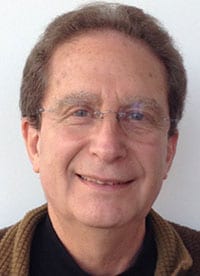 April 27, 2016 – Botchan to Be Interim Dean
April 27, 2016 – Botchan to Be Interim Dean
Michael Botchan has agreed to serve a one-year term as interim dean of the Division of Biological Sciences in the College of Letters and Science. More >
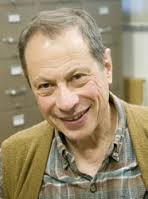 April 11, 2016 – Kirsch Awarded Dickson Emeriti Professorship
April 11, 2016 – Kirsch Awarded Dickson Emeriti Professorship
Jack Kirsch, former professor of chemistry, biochemistry and molecular biology, has been awarded a Dickson Emeriti Professorship by the UC Berkeley Emeriti Association. Since his formal retirement in 2006 he has continued to do research and teach, and has developed a number of freshman seminars. More >
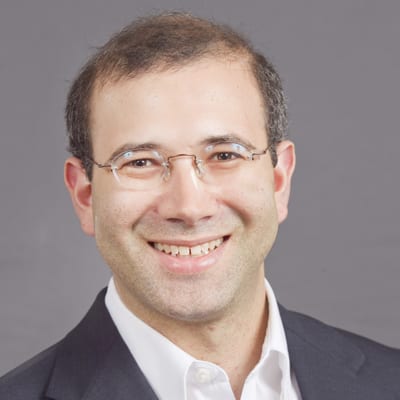 March 10, 2016 – Brenner Named ISCB Fellow
March 10, 2016 – Brenner Named ISCB Fellow
Steven Brenner, a professor in the Department of Plant & Microbial Biology, has been elected a fellow of the International Society for Computational Biology (ISCB) for his groundbreaking research in computational protein analysis and genomics. Brenner’s work is on the cutting edge of computational biology, the science of developing and applying computational approaches to understand biology. More >
 March 9, 2016 – Alpert Prize Recognizes CRISPR Pioneers
March 9, 2016 – Alpert Prize Recognizes CRISPR Pioneers
The 2016 Warren Alpert Foundation Prize will be awarded to Jennifer Doudna and four other scientists for their remarkable contributions to the understanding of the CRISPR bacterial defense system and the revolutionary discovery that it can be adapted for genome editing. More >
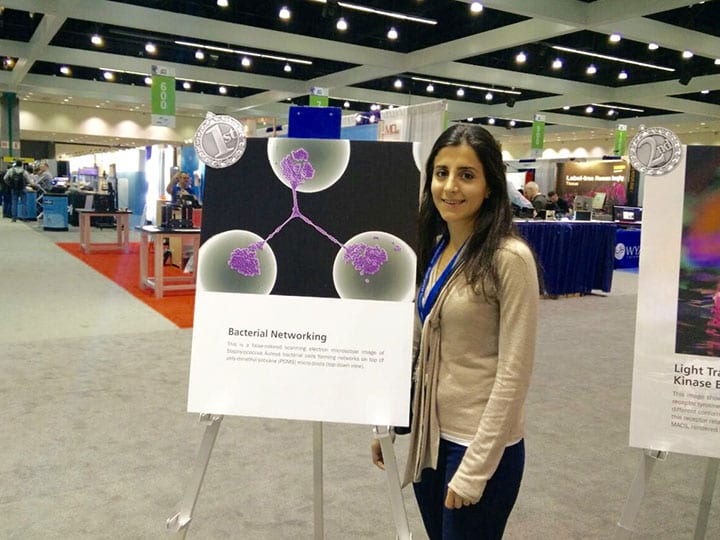 March 3, 2016 – Grad Student Zeinab Jahed Wins BPS prize
March 3, 2016 – Grad Student Zeinab Jahed Wins BPS prize
Zeinab Jahed, a graduate student in Mohammad Mofrad’s lab, won the first place prize in the 2016 “Art of Science Image Contest” at the Biophysical Society annual meeting in Los Angeles. The image, titled “Bacterial Networking,” shows scanning electron microscopy of Staphylococcus aureus bacterial cells forming networks on top of poly-dimethyl-siloxane (PDMS) micro-posts. More >
 February 18, 2016 – Miller Professorships Awarded
February 18, 2016 – Miller Professorships Awarded
Arash Komeili, Susan Marqusee, and Ahmet Yildiz are recipients of 2016-17 Miller Professorship awards. The purpose of the Miller Professorship is to allow members of the Berkeley faculty the opportunity to pursue new research directions. More >
 February 16, 2016 – Paul Alivisatos Awarded Dan David Prize for Nanoscience Research
February 16, 2016 – Paul Alivisatos Awarded Dan David Prize for Nanoscience Research
Paul Alivisatos has been awarded the international Dan David Prize for his contributions in the field of nanoscience. Alivisatos is considered one of the founders of nanoscience, having pioneered the development of the fundamental building blocks of nanotechnology. He and his team first synthesized semiconductor nanocrystals for use as fluorescent probes. His biological quantum dots enabled color-coded identification of multiple cell structures for many biomedical applications. More >
 January 22, 2016 – Herr Receives Mid-Career Award
January 22, 2016 – Herr Receives Mid-Career Award
Amy Herr is the 2016 recipient of the Mid-Career Achievement Award from the American Electrophoresis Society for exceptional contributions to the field of electrophoresis and microfluidics. More >
 January 18, 2016 – Head-Gordon and Lee Honored
January 18, 2016 – Head-Gordon and Lee Honored
Teresa Head-Gordon and Seung-Wuk Lee have been elected as new Fellows of the American Institute for Medical and Biological Engineering College (AIMBE). The College of Fellows is comprised of the top two percent of medical and biological engineers in the country. More >
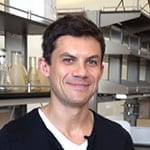 January 13, 2016 – Zoncu Awarded
January 13, 2016 – Zoncu Awarded
Roberto Zoncu has received a Damon Runyon-Rachleff Innovator Award for his proposed work to synthesize novel molecules that can specifically disable the lysosomal-mTORC1 signaling pathway as a new means of starving cancer cells and thus blocking tumor growth. More >